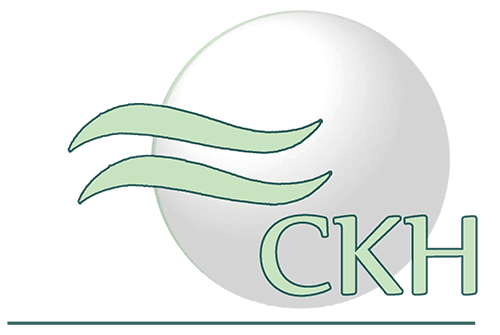What is the concept of Symptom Language about? This chapter of the Organon of the Creative Homeopathy covers one of the essential pillars of holistic therapy, also known as psychosomatic manifestations or the individual psychological meaning of a specific disease. According to the mainstream medicine narrative, “some” symptoms are based on psychological disharmonies—psychosomatic diseases.
From our perspective, the understanding of Creative Homeopathy, every pathological somatization, even injuries acquired by “accidents,” is based on an internal conflict. This creed derives from the Hermetic philosophy that everything is governed by “cause and effect” and “reality is made of consciousness.”
Psychosomatic Communication
The Current Paradigm Vs. Creative Homeopathy
Usually, when a patient goes to his physician, he expects him to redeem himself from his suffering. For example, the client has a severe headache. In the current paradigm, a sloppy physician will offer painkillers and tell his patient to return if it won’t get any better soon. A more dedicated practitioner will look for the most common reasons which could cause this symptom. Well, I might undoubtedly over-simplify things here. Still, the current medical paradigm is geared towards fighting the symptoms or, at best, turning them off by finding a physical cause and trying to eliminate it.
“What you resist persists.”
C. G. Jung
A Creative Homeopath has a whole different approach. We understand that symptoms are a cryptic language of the subconscious mind. You could also say it is an intuitive and symbolic form of communication. Now we need to realize that we humans are multi-level beings. In the Jungian understanding, subconsciousness is associated with an eternally existing core of our personality. Others would refer to it as our “Soul.” On the other hand, our wake consciousness is represented by our ego.

Understanding Symptom Language
To put Symptom Language into a spiritual context, I could describe it like this: symptoms are a method of our soul/subconsciousness to make our ego/wake consciousness personality aware of some conflicts of interest. In most cases, the discrepancy is pretty simple. Mainly the ego is unwilling to deal with a specific conflict that he is actually semi-aware of or which it has already pushed down into “the basement of our awareness.”
The ego is a great servant but a bad master.
We as humans mostly try to ignore unpleasant feelings and drive them more into the unconscious while our Soul insists on neutralizing/solving them. Indeed, that makes sense because the ego is just a temporary manifestation in the bigger scheme of things and prefers short-term pleasure. On the other side, the Soul has a somewhat more sustainable existence and a higher priority agenda concerning its evolution.
The challenge of bringing the Soul and ego into harmony is an ancient topic among all wisdom teachings. Some philosophies use the analogy of the relationship of a shepherd with his dog to describe our spiritual struggle to act coherently and in inner unity. If everything works in harmony, the ego takes care of the herd, but if it runs wild, it creates havoc.
Inner Conflicts Are the Key
I don’t want to dive too deeply into the possible conflicts between our different consciousness layers. It is incredibly complex. The reasons for how and where these disavowals derive from are manifold. Later, I will use the simple example of “attachment issues,” typical among humans, to illustrate certain principles we follow as Creative Homeopaths when dealing with such disharmonies.
There is only one fact I like to emphasize at this point. The Creative Homeopath is primarily not looking to solve the disease; instead, he searches for this somatization’s inner conflict. The chief complaint is the best clue about where the battle is hiding. When ego and Soul are back in sync, and all judgments are neutralized, the symptom has no further purpose of existing and may vanish. That is what we call healing.
We all have a backpack full of challenges.
In theory, it is a straightforward approach. Unfortunately, most humans have a massive backpack with such conflicts. Some divergencies have escalated to the point of physical manifestation; others are dormant and haven’t been somatized yet. Most inner distortions are interconnected like a giant spider web. Solving one issue changes the dynamics of the network and ultimately leads us to the next challenge. Some of those conflicts are ancient. We can learn how we picked them up in past lives long ago in professional regression—we already carry some subjects over many incarnations.

Conclusions
Symptom Language in a Nutshell
In essence, Symptom Language is the art of understanding an archetypical symbolic form of communication of the unconscious part of our being. We can refer to this aspect of our immaterial core as our Soul. Conflicting with this higher self creates illness and disease—not in the sense of punishment but as a request, an invitation to change our ways of life. We can find the main reason our ego-based beliefs contradict our Soul’s purpose in trauma and subsequent psychological imprints. Which we will cover in a later article.
Dissolving Conflicts
Before we address our homeopathic approach to dealing with trauma and psychological imprints, I will elaborate on how we attract and reengage in the conflictual pattern in repeating cycles. Each reoccurring trauma can be seen as a nuisance or a renewed opportunity to solve the (re)emerging issue once and for all.














Edit Suggestions:
-Under Psychosomatic , 2nd paragraph – “On the other hand, our wake consciousness is represented by our ego.” –> “waking” would be a better word choice than “wake”
-Next paragraph: “symptoms are a method of our soul/subconsciousness to make our ego/wake consciousness personality aware of…” –> “ego/waking conscious personality…”